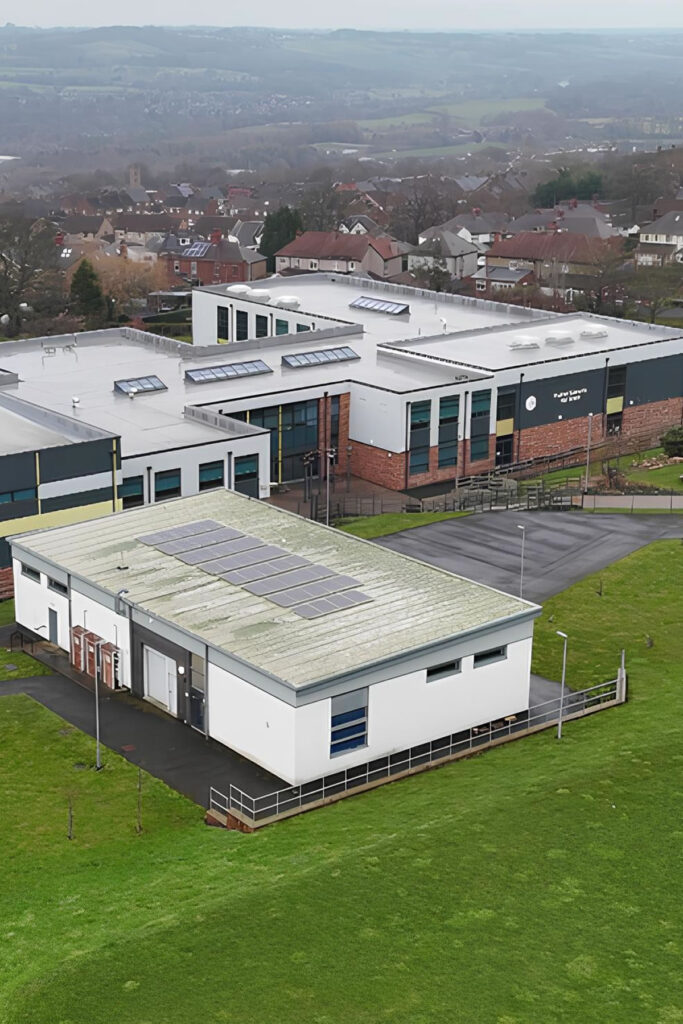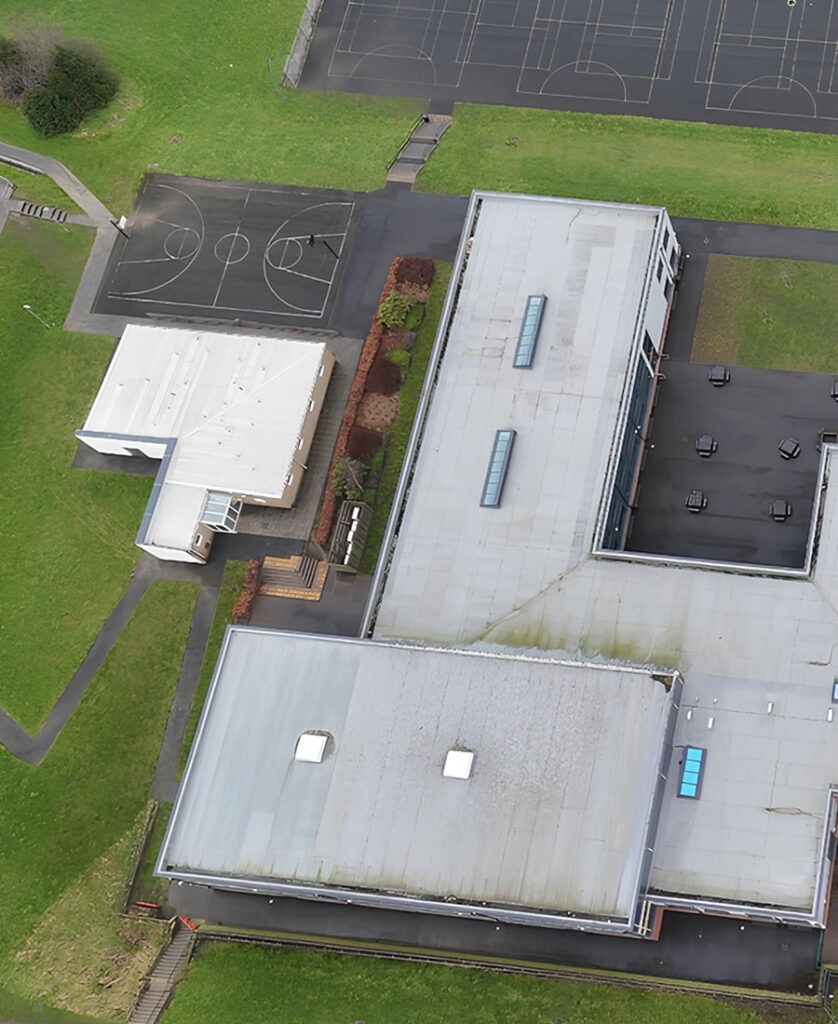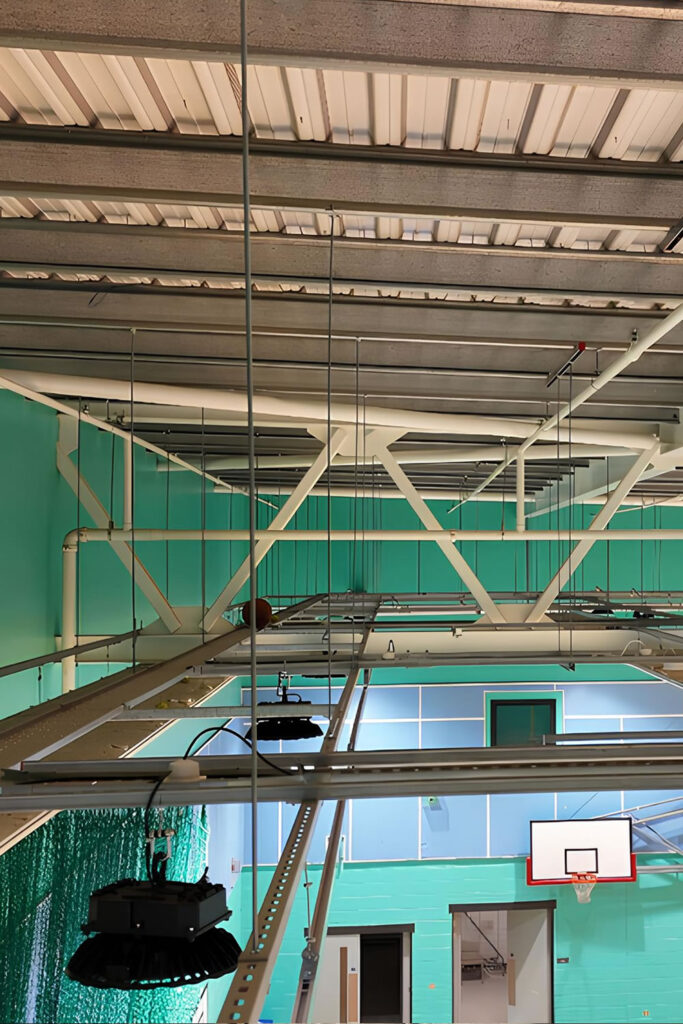
Structural & Subsidence Survey
Investigate potential structural damage and subsidence following reported floor cracking.
Overview
Following internal sheering and suspected structural compromise within a school facility, Construction Savvy Ltd deployed a drone survey to assess roof condition and wider site risks without compromising safety. With access to the roof by MEWP only (due to the design) and potentially being unsafe, our aerial inspection provided high-resolution visuals of roof integrity, building undulation, and surrounding drainage issues—including areas of standing water that may have contributed to subsurface instability. This non-invasive approach enabled rapid diagnostics, supported compliance with duty-of-care obligations, and informed next steps for remedial planning.
“We were incredibly impressed by the speed and professionalism of the team when concerns were raised about the building’s condition. Within days, they had carried out a full drone survey of the roof and surrounding structure, followed by a detailed assessment of our internal services. What stood out most was their sensitivity to the school environment—they worked discreetly, communicated clearly, and delivered reports that were not only thorough but easy to understand. Their rapid response gave us the clarity we needed to act quickly and confidently. It felt like we had genuine partners looking out for the wellbeing of our school community.”
Head TeacherCheviot Learning Trust
Cheviot Learning Trust
Client: Cheviot Learning Trust
Location: Prudhoe Community High School, Northumberland
Project Duration: Ongoing monitoring over a 4 week period
Completion Date: February 2025
Objectives
- Assess the extent and cause of visible structural damage
- Determine whether subsidence is affecting the building’s foundations
- Minimize disruption to school operations during investigation
Survey Methodology
Drone Deployment
- Technology Used: UAV equipped with high-resolution RGB and thermal cameras
- Flight Scope: Full perimeter and roof scan and elevation mapping.
Advantages
- No scaffolding required
- Rapid data collection over inaccessible areas
Ground-Level Investigation
Complementary Techniques
- Crack monitoring sensors installed internally
- Borehole sampling and soil analysis
- Drainage CCTV inspection to check for root intrusion or pipe failure
- Structural Engineering Review: Focused on upper floor where initial cracking was observed
Key Findings
Possible Cause
- Trigger Event: High winds from Storm Eowyn in January 2025 may have exacerbated existing weaknesses
- Underlying Issue: Soil shrinkage and drainage failure contributing to uneven foundation movement
Outcomes
- Immediate Action: Closure of the school for safety; transition to online learning
- Remediation Plan: Structural reinforcement, drainage overhaul, and subsidence monitoring
- Future Strategy: Annual drone surveys and installation of permanent crack monitoring systems
Lessons Learned
- Drone surveys offer rapid, non-invasive diagnostics for structural risk
- Combining aerial and ground data provides a holistic view of building health
- Early detection of subsidence can prevent long-term damage and costly repairs
Why Choose Us
- Proven expertise in industrial foundation systems.
- Precision-focused delivery under tight timelines.
- Strong safety culture and environmental compliance.
- Trusted by global leaders in manufacturing and materials




